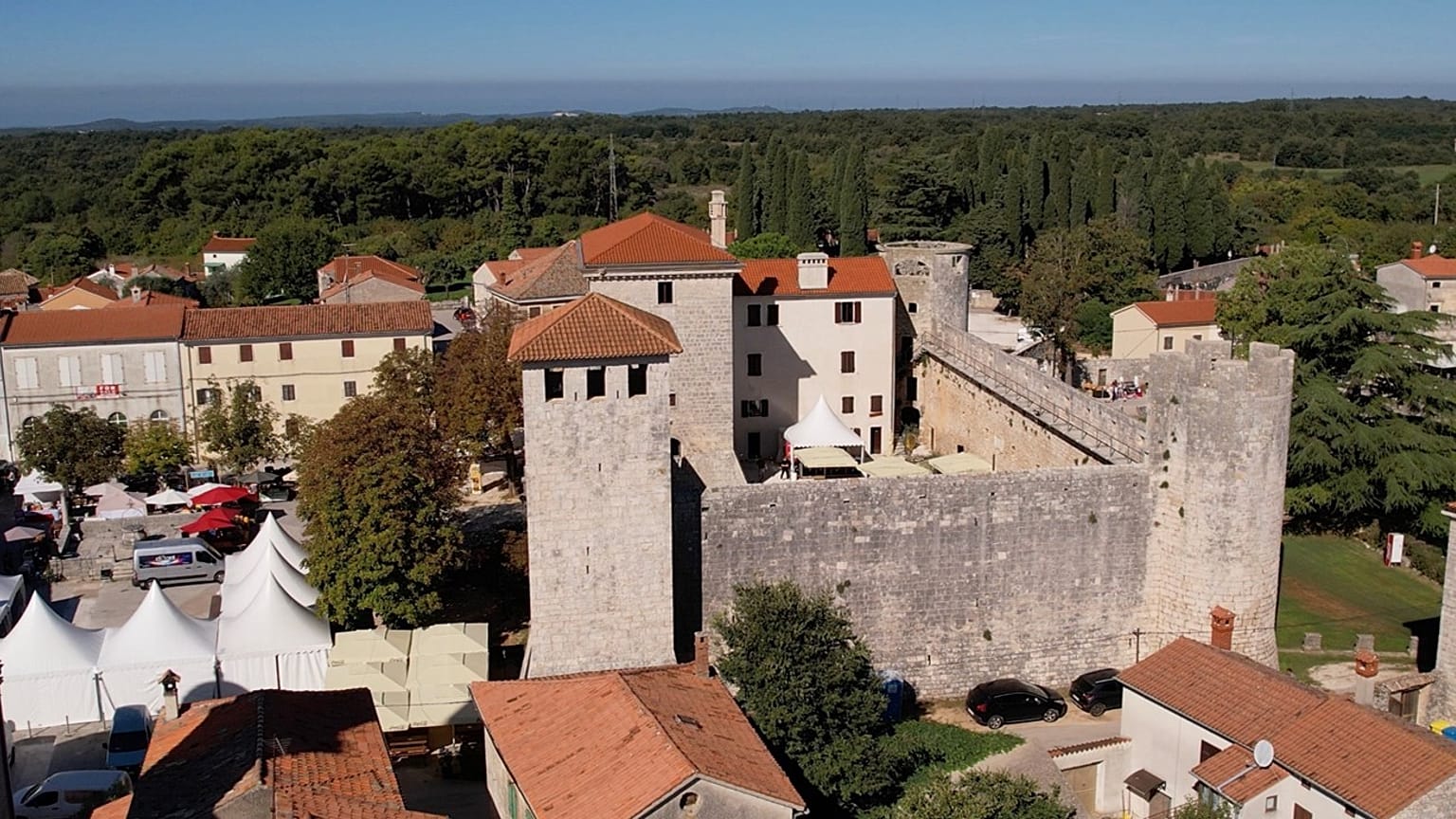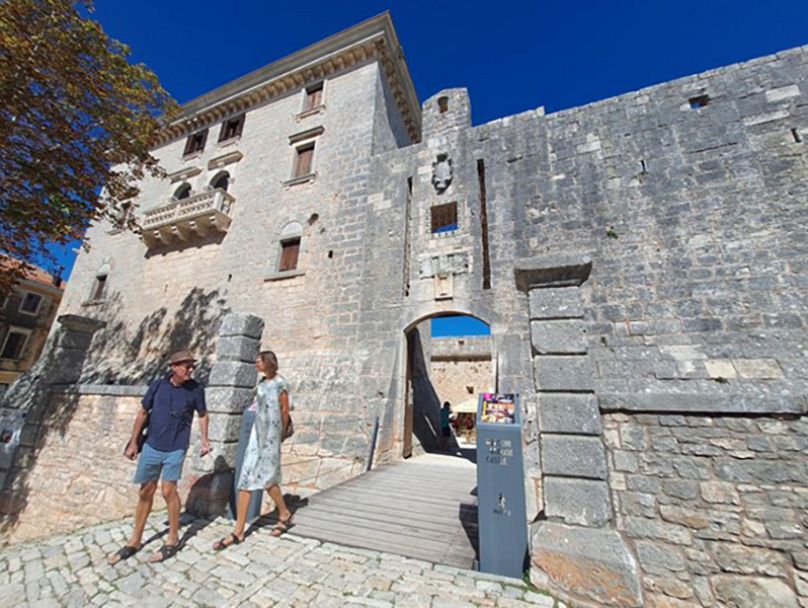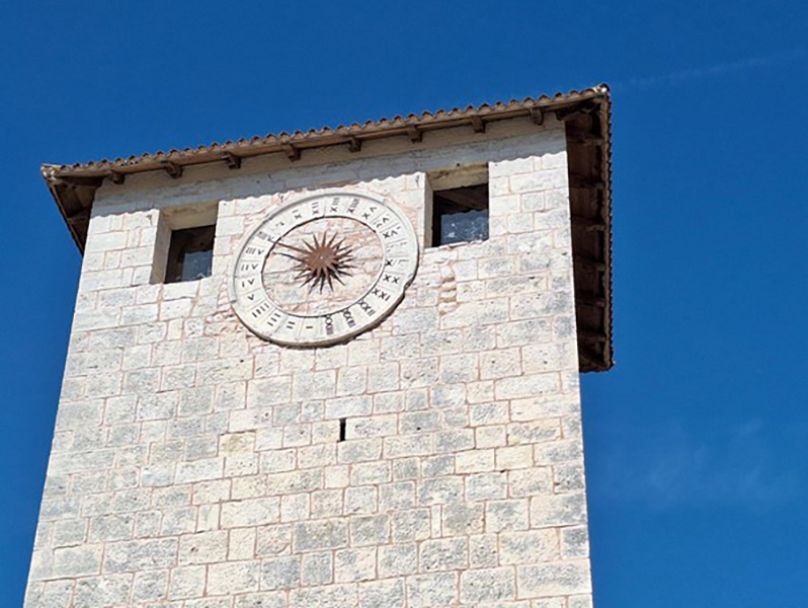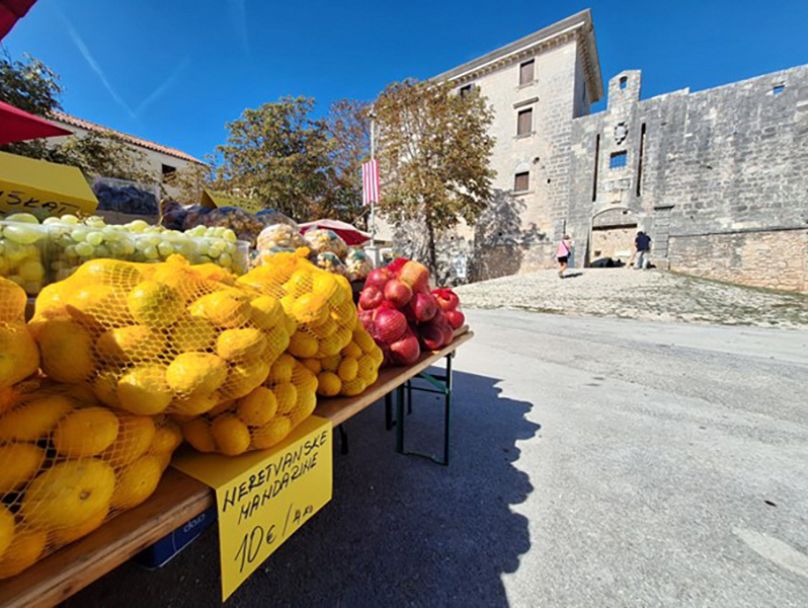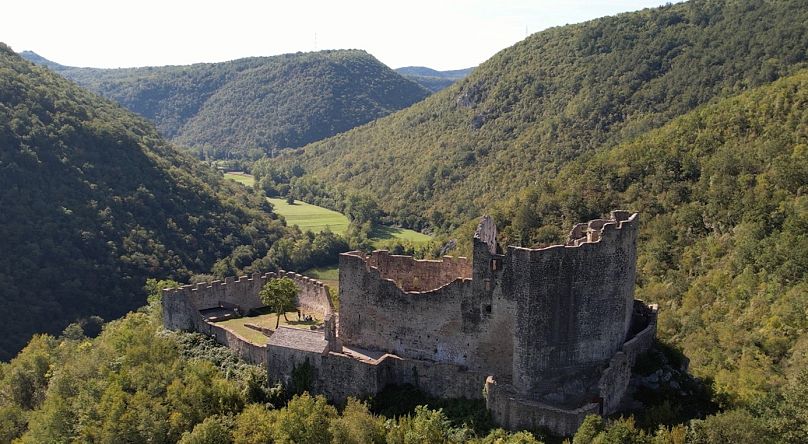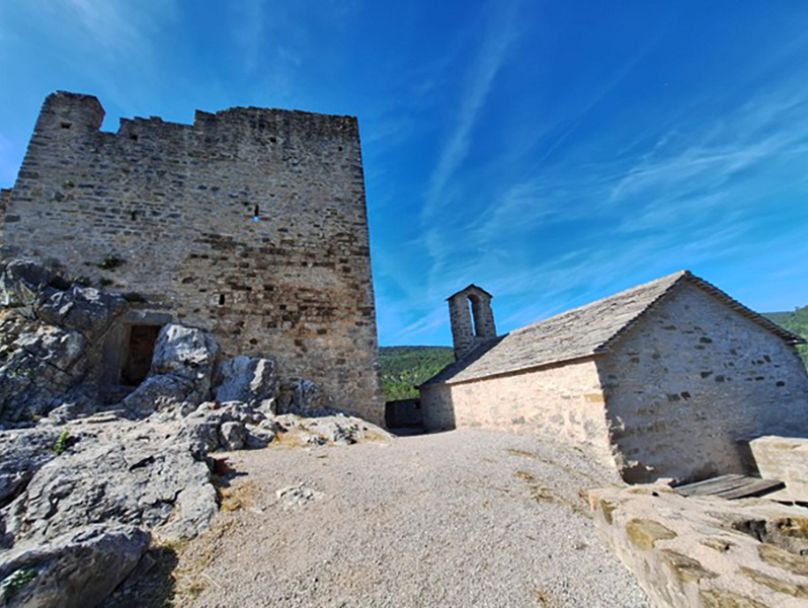Two ancient castles in the Croatian region of Istria have been renovated and refurbished to give them a second lease of life. This is how old stones are providing a glimpse into to the past — while creating jobs and boosting local economies.
Morosini-Grimani Castle lies at the heart of the small village of Svetvinčenat. It’s one of the main and better-preserved Renaissance castles in the region of Istria, Croatia. Abandoned for quite a long time, it now receives some 45,000 visitors every year and employs 12 staff in the high season. Its fully renovated architectural structure provides a setting for myriad activities for children and adults, including escape-room games, weddings, culinary tasting events, team building, concerts or mediaeval nights. Its surroundings are also used for local food markets or traditional games.
Managers claim these activities are always chosen carefully with an eye on their sustainability.
“The castle was here before us and we need to make sure that it remains after us,” explains Matija Ljuba, the castle’s creative development manager. “And this is something that we talk about to all the guests who come here: to have fun and enjoy it, but to respect every stone.”
Morosini-Grimani is one of the two castles chosen by a European project aimed at giving a second lease of life to the region’s ancient fortresses, so they provide a glimpse of the past while creating jobs and boosting local economies. The KulTERRA project’s total budget was around €3 million. 85% of this was covered by the European Cohesion Policy.
The second castle involved is far more isolated. Petrapilosa Fortress dates to the 10th century and lies near the small village of Buzet.
Its battered walls now host treasure hunts for kids, along with poetry festivals, meditation workshops and jazz & pop/rock concerts. Its isolated position added challenges to the design and logistical development of these activities, says Matija Nezić, Petrapilosa Castle’s cultural and artistic coordinator. “Perhaps in history, this isolation provided an advantage as a strategic defence position. However, today it is very, very inaccessible terrain. We don’t have good enough roads to organise bigger tour groups coming by bus as then it really becomes a problem. We are working to improve the situation,” Nezić explains.
Whatever the challenges addressed and the solutions found, these castles’ future indeed depends on their ability to keep reinventing themselves as bastions of sustainable cultural tourism, claims an archaeologist involved in their study and renovation.
“When we’ve restored the structures that are still preserved, if they are not in use, then soon after we will have problems again, because the structures will again collapse or be destroyed, and then it’s hard to find the finances to repair them once more,” says archaeologist Josip Višnjić, who studied the history of Petrapilosa Castle and worked on its renovation. “So, when you have a space that is in a condition like here in Petrapilosa, it really attracts people,” adds Višnjić, who is also an Assistant Professor of Archaeology at the Juraj Dobrila University of Pula.
The leading partner of the ‘KulTERRA’ Project was the Svetvinčenat Municipality and it included close cooperation with another 11 partners from the public, private and civil sectors.















